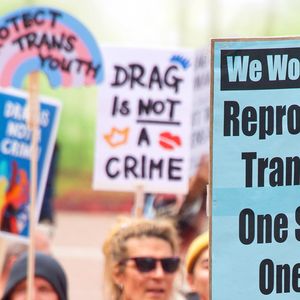Last week, President Trump’s White House released his proposed budget for Fiscal Year 2018 (FY18) and squarely in its sights for cuts are the Centers for Disease Control and Prevention. Of particular concern is a proposed $22 million cut to the Division of Sexually Transmitted Disease Prevention (DSTDP) on top of the $5 million cut in the final 2017 budget. If Trump’s budget is enacted, the CDC has warned that it would no longer be able to fund STI prevention programs in all states, territories, or directly-funded cities, thereby decimating the nation’s ability to fight a raging STI epidemic.
CDC officials state that STI rates are rising at a time when the country’s systems for preventing those infections is eroding – STI prevention staff sizes have waned, and STI clinics are shutting down. This infrastructure will only continue to deteriorate with these severe cuts.
This tone-deaf proposal of extreme cuts comes when STI funding is already at a 20 year low and STI rates have skyrocketed to a 20 year high. The reason STIs reached such historic heights? Look no further than the lack of investment in STI prevention infrastructure, which has perennially failed to meet the needs of this burgeoning epidemic. Now is certainly not the time to back away from prevention efforts.
Investing in Prevention Works
Evidence shows that adequate investment in preventive efforts work. According to recent CDC data, cases of HIV fell by more that 18 percent from 2008 to 2014. This progress was made due to tremendous advancements in treatment and prevention efforts such as ART and PrEP, AND sustained and increased funding to the CDC Division of HIV/AIDS Prevention (DHAP). This encouraging trend illustrates that with proper investment in prevention, progress can be made to combat these epidemics.
This kind of federal investment also works to address the curable STIs as well. In the late 1990s, CDC launched a syphilis elimination plan. This plan brought new money into the STI prevention field to enhance existing programs and develop new strategies to combat the disease. Evaluation of that program showed that this increased funding resulted in notably lower syphilis rates than expected in subsequent years.
The progress made in the STI and HIV Prevention fields is imperiled by Trump’s proposed slash of the DHAP budget by 16 percent and DSTDP by more than 17 percent.
STI Prevention is HIV Prevention
Traditionally in the United States, STI Prevention and HIV Prevention programs were independent entities working parallel to each other to control their diseases of focus. However, increasingly over the years, the consensus has shifted around these programs working in concert to play a vital role in comprehensive programs to prevent both STIs and HIV. More and more, STI prevention is viewed as integral to HIV prevention and detection. It’s now known that people who test positive for an STD, particularly syphilis and gonorrhea, are more likely to also test positive for HIV, or to get HIV in the future.
Furthermore Disease Intervention Specialists — the boots-on-the-ground STI prevention workers — are on the frontline of fighting the STI epidemic and are often key entry points for individuals to access STI and HIV testing. It is their job to track down those at high-risk in the community and make sure they get the care that they need. DIS also often facilitate screening for STIs and HIV that otherwise might not happen. Coordinated efforts between HIV and STI programs are integral for identifying and stopping the spread of infection, linking individuals to care, and for preventing these more serious and often avoidable health consequences.
An exciting new study released this month shows that use and adherence to CDC PrEP recommendations for STI screening can result in reductions in STIs amongst men who have sex with men, a population who bear a huge burden of STI and HIV infection.
Prevention Means Health Care Savings
Slashing prevention budgets to “save” money is short-sighted and misguided. CDC has estimated that for every dollar spent on STD prevention, $1.88 in health care costs is saved.
STIs and HIV are often asymptomatic and don’t rear their heads until it’s too late. Undiscovered STIs and HIV can result in more serious health consequences resulting in need for intensive health care treatment, infertility, and even death. These extreme and avoidable negative health results cost the health care system billions of dollars annually. The most recent data shows that STIs cost the United States health care system upwards of $17 billion dollars and cost individuals even more in immediate and life-long health consequences.
While this budget is only a proposal and many legislators have indicated that this bill is “dead-on-arrival,” it indicates a failure to understand, at the highest levels of power in this country, the real cost to the health care system and human lives that these preventable diseases pose.
The Future of STIs
At a time when STIs rates are high and climbing, a reduction in funding for STI prevention will only result in more congenital syphilis, more undiagnosed chlamydia and gonorrhea, more undiagnosed HIV, and ultimately more cost to the health care system.
STI funding cuts mean that efforts to fight against babies being born with Congenital Syphilis, increasing levels of drug-resistant Gonorrhea, and skyrocketing rates of Syphilis — especially among gay men — will be devastated.
Until adequate funding is put in place for STI prevention STI rates will continue to skyrocket and HIV prevention will suffer as a result.
David C. Harvey, MSW, ACC, is executive director of the National Coalition of STD Directors.
















































































